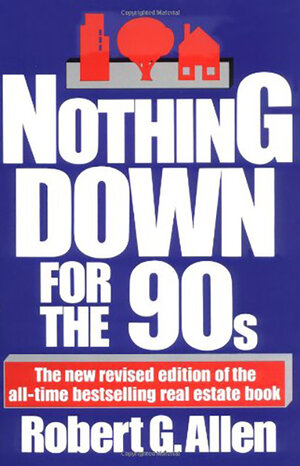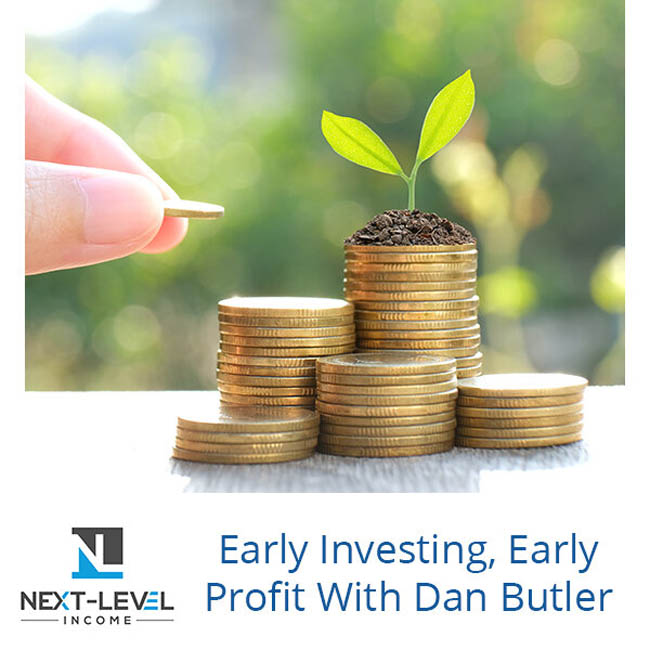Subscribe to The Next-Level Income Show
Watch The Episode Here:
Listen To The Podcast Here:
EARLY INVESTING, EARLY PROFIT WITH DAN BUTLER
In this show, we have Dan Butler. He is a Cofounder of 6AM Core Collective, the parent company to CrestCore Realty, CoreLend Financial, CrestCore Property Management, CoreBuild, CityLight Commercial Services and CoreAssist. He spent the first twenty years of his career in plant management and operations with Fortune 500 manufacturing companies then left the corporate world in 2014 to be in real estate full-time. Now he owns over 900 units personally. He’s been an active real estate investor since 2001, focusing on buying and managing single-family homes, duplexes and multifamily apartment buildings. He co-founded CrestCore Realty in 2012 and manages more than 3,000 properties in Tennessee for over 700 local, national, and international investors. Dan, welcome to the show.
Thank you so much. I’m glad to be here.
It’s great to talk to you again. For our audience that haven’t met you before, maybe you could share a little bit more about how you ended up in the role you are now and more than 3,000 doors. Share your story.
It goes back to high school. I had a mentor in high school that I helped do grunt work and do the yards of the rental properties that he and his father-in-law owned. He taught me about wealth creation and listened intently. Going into college, I had that in the back of my mind that at some point I was going to do real estate. I didn’t know what that was going to look like. I did engineering. I had lawn care services as well. Out of that, I created some cash to buy my first house when I graduated, which then parlayed into lines of credit. I moved to Memphis in 1998. I was determined to buy my first rental.
The book was Nothing Down for the 90s by Robert Allen. He’s got the 2000s now and all that stuff. I was in the ’90s at that point reading that one. Before the BRRR strategy became the BRRR strategy, it became a popular acronym through BiggerPockets. That’s the strategy that I figured out that I wanted to do. I have a manufacturing gig. I was in engineering, operations, and plant management. I started buying real estate on the side. The whole goal was to have choices. I didn’t know what that meant. In my mind, when I hit 55, which sounded earlier than 65, I could either quit and be a landlord or I could accelerate my income or speed up the retirement.
I just wanted choices and I didn’t know this was going to lead into what it did. I parlayed two careers for about fourteen years, which was brutal. There are a lot of testimonies coming back around these days of the journey that I went through to do all that. I was blessed that I created that, and then that created a property management company. We wanted to manage for others to create the income so that we could manage our own like we wanted to be managed. We started the whole vertical integration thought process. What else can we add to help feed the businesses? I’m happy to go through all those. Each business is linked in some way somehow where we’re normally the largest client. We have 900 units out of 3,000. We’re the largest client of the property management company or the maintenance company. It plays off that and that’s how the businesses got started and built.
Tell us a little bit more about why you went into engineering. We have a lot of similarities. For those that are familiar with the show or have read our book, they know that I have an engineering background. You have an engineering background, then real estate. I listened to your story and it sounds like you’re a real life Rich Dad Poor Dad story when you’re thinking about that. Tell us a little bit about why you went into engineering and what was the inspiration? You talked about family friend or mentor that talked about wealth creation and the thought process behind that.
Through middle school and high school, I loved and enjoyed math. I was good at math. I hated English, right side of the brain. I didn’t have that artistic side. My dad tells me, “Why didn’t you tell me this before?” Since I was nine years old, I’d be doing math, numbers, and stuff on church bulletins or calculating how much I was going to make by cutting yards. My mind has always been spinning that way. Anyway, my mentor was a mechanical engineer.
Between what I had with math and what I saw how he thought, that analytical, troubleshooting, and problem-solving mindset, that’s what I was after. As soon as I got into engineering, I realized I did not want to be that design engineer. That wasn’t who I was. I wanted the ability to think different and problem solve. I’ve realized I have a love of coaching people. That’s how I ended up at operations when I did because I saw those two combined. I could use my engineering process while coaching people in a manufacturing environment. That’s how that I pull it out.

Start Investing Early: In corporate, you have a lot of support systems, so when you’re starting on your own, you don’t realize how much you’ve been relying on others.
You talked about running those two parallel careers for fourteen years. You shook your head when you said that. What were some of the challenges? What else did you bring from your operations career? A lot of those stuff are similar with fifteen years in the med device space. I learned a lot along the way and think, “How can I apply this here? I often talk about working with surgeons and what I learned. Maybe you can share with the audience, operations to me sounds like a great fit for what we do in the real estate and the multifamily space.
Back then, I was blessed to get a Six Sigma training, Lean Kaizen training, where you’re getting rid of non-value-added activities and workflow. We had ISO certification, which is your standard operating procedures on steroids. I carried all that into creating these businesses and having that mindset of efficiency, processes, and coaching people. What I didn’t realize was the pitfall of all that is in corporate, you’ve got a lot of peripheral stuff. They’ve been around a long time so they got a lot of support system. When you’re starting on your own, you don’t realize how important relying on others and that hiring piece is to creating your business. If I had to say one big mistake, it’s where I didn’t use my skillset from before of vetting and training people on the front end. I was just, “You do property management? Come on in.” You’re blowing and going through entrepreneur and starting up. You’re trying to plug holes and keep things afloat. That would probably be my biggest piece that I was at a struggle early on.
You bring up a good point if you look at the skillsets that are most desirable these days. We can hire and outsource. We can bring in from overseas different technical capabilities but the ability to lead, to find talent, to train talent, and ultimately to find the best fit, that’s what provides the robustness and durability of a company over time. That’s a great lesson for anybody. At the commercial side, Operations Six Sigma, when you’re operating from a lean perspective. I was on a webinar and talking about the lower the cap rate, the more the value creation. Share a little bit about your transition from the single-family space to the commercial space. Where are you focused now as far as the real estate market and why that is?
I started out early on with the smaller multifamily that did not require onsite management. I like that space. I call it under 50 units for simplicity. You don’t have to have an onsite manager. The overhead on that is a lot lower. You don’t have the hedge funds and private equity chasing after that. That’s too small of a fish for them. You can find those mom-and-pop way landlord that may have owned it for 30 years, that’s now ready to retire. Out of that, it would become potential for owner finance or partial owner finance.
One of the key things with my business partner, we were willing to give up personal guarantees early on. Some people hold that piece. They don’t want to do personal guarantees. It’s either going to work or not, that’s my personality. We wanted no money down. That’s always been our mantra. Every multifamily we bought, we bought with no money down. Every house we bought, it’s always been no money down in one way, some way, somehow. That’s how I got into it and that’s how I continued to buy to this day.
That’s impressive because I’m reading the same books by Robert Allen. I’m trying to remember there was a silver one he had, I can’t remember if that was No Money Down for the 2000s or his multiple streams of income, and all the ones that influenced me. A lot of the early properties I bought and leveraged off of other ones and took out credit card loans and different stuff. When I was buying in the early 2000s, you can probably relate. They were like, “Just sign here.” I’m like, “That’s it? You’re going to give me a loan? That’s terrific.” Fortunately, I had good income and we could do stuff. Was there a point though where you made a jump? Seven hundred units are a lot of units. Did you go from 2 to 4 to 8 to 16? Was there a jump where that curve went from linear to curvilinear?
It’s one of my strength and weakness all rolled into one. I like to go big or go home. I started out with a nineteen-unit multifamily when I was 27 years old. I had a sixteen-unit when I was 28. I still didn’t know what I was doing. I was underinsured. No renter’s insurance and had a fire. That’s a whole other story. The other piece that I learned early on was for the big banks, you’re just a number. It’s like when you’re in chemistry class and there are 300 people there. Your professor is like, “Who is this guy? He’s number 1, number 2 or whatever.” That’s why I felt with the banks when they were saying, “We’ve sent an underwriting to Birmingham, Alabama. You say yes or no.” I learned what to do with the local banks. I created a system where I had five of them going at one time. They all gave me $250,000 offer through guidance line, which I could buy one house for $250,000 or five at $50,000. They didn’t care but they’ve approved me to spend $250,000. I had that across five banks. By the time I came back that next year, I’d already spent $1 million that these five have given me and I want another million.
Fast forward from 2001 to 2008 when the crash happened, part of that equation, I’d say as well is that I’ve seen people getting taught about getting houses buying cheap, fix them up, appraising them high and taking money out. Do you remember that strategy? It is overleveraging. The key piece of the engineering piece is that I got to extrapolate that out. I’m like, “This makes no sense. What if the tenant moves out?” It started becoming a negative cashflow. I could see the math is not working for the long-term.
You were buying on cashflow. You weren’t buying on appreciation like everybody else in the mid-2000s. That was nuts.
The piece that I was getting to was because of that relationship with local banks, when 2008, 2009 and 2010 hit, they were calling us left and right to take houses that they were taking back. I would get ten houses here, five here. At one instance where we got 100 houses in one swoop. In that 2008 to 2010, a lot of people were losing their property. We ramped up about 300 units in that three-year span. It was crazy. Part of that too though is you had to take the good with the bad. You get ten houses, eight of them were awesome and two of them were dogs. It’s a little too long of a lesson, but you learn later on you should never keep those dogs. You should have gotten rid of them. The crash was our accelerant, which is opposite of what most people would probably hear. When they were trying to hold on, we were pedal to the metal and taken off.

Start Investing Early: The ability to lead, find talent, train talent, and ultimately find the best fit is what provides the robustness and durability of a company over time.
That’s an awesome lesson. It’s something that I talk about in my book. Going through that period, we didn’t lose anything. We didn’t lose any of our properties. We were cashflow positive. We stopped buying in ‘05. We had 3, 4 years of lag time and ample reserves. It still sucked sitting on properties that you saw go down in value, even though they were still cashflowing. We were still making investments, but we didn’t have as much capital as I would have liked to have to jump in. That’s something I talk about real estate cycles and it’s going to happen again. We’re going to get overleveraged. It’s probably not going to look exactly that way, but that’s a great lesson if you’re reading to make sure you’re not overleveraged. When it looks crazy out there, prepare because as what Buffett say, “When there’s blood in the streets, buy.”
“Be fearful when others are greedy and greedy when others are fearful.”
What are the rules that you follow when you’re looking at properties now?
I’m a little pickier than I used to be as far as the areas. I was buying a ton. If the numbers look like they made sense on paper, I would buy. As you get older and wiser, and you’ve been through a few cycles, you realize certain areas are better than others. You hone in on that. My whole rule of thumb has always been no money down. If it’s all cashflow positive even $1 on a fifteen-year note, and that’s what’s reserve for maintenance, insurance, taxes, all that stuff, to me, that’s a good deal. That’s my barometer. That’s a small buy box. You’ve got to find a good deal to make that work especially right now. Most people are selling I’m sure wherever you are. You have to put 25% down on a 30-year note to cashflow.
I work with a handful of young investors that are getting started. I say young in terms of investing, not age. I was talking to one and walking through a deal. I brought up the 1% rule. I said, “If you see a deal, run this on the back of the napkin.” He’s like, “No way.” I said, “There you go, but I’m happy to walk you through it.” We’re getting to that point again where numbers aren’t making a lot of sense in a lot of different markets. You have to either be picky or you have to be looking at different stuff.
To your point, as engineer looking to those angles of how I apply that. I figured out before the 1% rule came across that 1.5% was my rule. That would make it better in your note. That’s my buy box. It’s got to be 1.5 or better.
You’ve got to kiss a lot of frogs when you’re looking at those numbers. Here’s the other thing that I noticed, Dan. Most of your properties are in the heartland of the country. A lot of people romanticize like, “It would be great to buy a property in this cool area.” We see better deals from a cashflow perspective in the heartland of the country. Can you share your perspective on that experience with that versus buying in San Francisco where you’re paying $1 million for a row house?
I came from Greenville, South Carolina which the 1% rule is very prevalent over there. I have some friends so I keep up with the market. I had no idea I was blessed to come into Memphis, Tennessee with the top five price-to-income ratio. The rent-to-price ratio was one of the top five in the nation. What does that mean? That means that the deal, you’re going to be able to get 8%, 9%, 10% cap rate here in Memphis where you can’t get that in New York City where they’re fighting to get 1%, 2% like crazy. It’s amazing what that makes people do too. Ninety-five percent of our clients are in California. You’re like, “These guys buy houses left and right from California.”
In Memphis, it’s sight unseen and never been here. It blows my mind because I couldn’t do it. I’ve got to go and see it and understand it. I would invest over there, but I’ve got to drive every street. I’m going to meet with all kinds of agents. I’ll dig in. You’ve got business professionals out there who have got extra income. It’s so much less risky to put it over here, even if they lose it all because the real estate is so much cheaper over here.
I worked for Medtronic for ten years, which the Spine Division is located in Memphis. Memphis has a lot of great industrial and employment factors that make it a real positive. I know people that are investing and buying turnkey rentals in different areas of the country like Memphis because it works, where it doesn’t work here in Asheville, North Carolina right now.

Start Investing Early: Putting your clients first and money last, will change your perspective on how to run your business.
You bring up a good point. For your readers to understand, in Memphis we are 55% rentals. Whereas the national average is 35%, 36%, something like that. If you take that 20% delta on 300,000 parcels in Memphis, that’s 60,000 units on a comparable city. That’s a ton of inventory. A ton of stuff that can be consumed by investors to create cashflow and income.
One of the things we consistently talk about it in the book, you pick a strategy. We were talking about the BRRRR strategy, Buy, Renovate, Rehab, Refinance, Rent it out. It’s like, “That works. Multifamily strategies work.” Different strategies work. Pick a strategy, then pick an area of the country that works for you. If you’re a reader and you have geographic mobility, you say, “This is what I want to do.” If you can move to an area of the country that’s a lower cost of living, it has characteristics of the investing strategy that you are interested in moving to, Dan brought up a phenomenal golden nugget right there. Shifting gears a little bit. In addition to being an engineer, you’re an athlete, you’re a runner. I love the saying, “Have a hobby that keeps you healthy. One that makes you smarter and one that makes you money.” Talk about being a runner and maybe you can get into the 6AM Core Collective and how that came to be.
I’ve always been an athlete in sense of always worked out some way somehow, whether it be racquetball in college or lifting weights. I carried that all the way through moving to Memphis. I met my business partner. He’s a neighbor and our wives knew each other in high school. We both said we want to try to run. We started running back in 2004. We tried 5:00 PM. We tried 8:00 PM, which is not good because then you can’t go to sleep. We tried 5:00 AM. That’s way too early. We set it at 6:00 AM, which seemed to work for both of us. We could both get in bed on time. The beauty of that was the personal accountability.
Snow, rain, it doesn’t matter. He’s going to be outside my door and vice versa. Out of that came business strategies and I told him what I was doing. He’s a CPA, CFA, accounting background with real estate technology. We realized that 1 plus 1 was 3 for us to be partners. That’s how the 6AM Core Collective came together. That 6:00 AM means a ton to us. Several years in 4 days a week, 5 miles a day. That’s a ton of mileage.
I’ve got a great group of cyclists I ride with at 5:30 in the morning. That’s early. I would like 6:00 too but 5:30 works for us. We probably ride a little bit longer too than you run. It is amazing the bond you formed. You spend that many hours. There’s something special when you’re enduring, whether it’s physical hardship through athletics or anything else. There’s a real bond that forms. If you haven’t been through it, I know Dan, you know exactly what I’m talking about. We mentioned several of your companies as we got started. What’s the latest company? What’s your focus and how did that idea come to be?
Our latest company has been a company called CoreAssist. That’s our virtual staffing company. Property management has very slim margins. My brother, when I got into it, he goes, “I looked at that and it’s got one of the smallest margins of most industries.” There’s not much money there. It’s a very labor-intensive business. A few years ago, we started using a third-party out of India where we’d scan invoices on the scan machine. The next morning they’re all input into our property management software. We’re just cutting a check to the vendor.
We’re like, “This works good.” We didn’t know the people. We didn’t know who was behind doing the work, which is a service. We were in a mastermind in Dallas, Texas that we were going to three times a year. I met a guy in Dallas managing 300 properties with twelve people in Bangladesh and India. He had no employees here in Dallas. I’m like, “What?” It didn’t make sense. I peppered him with questions. I came back and told my business partner about it. He didn’t believe me. He says, “It was not possible.” He’s from Dallas. We met with him in Thanksgiving. I remember he called me and it was Thanksgiving Day. He said, “You won’t believe this. The guy has no offices. It was him sitting in a room and there’s nobody there.”
I remember he said, “We’re all eating ice cream and gelato and this guy is eating cake.” Meaning it’s a totally different process. Anyway, in that same mastermind, a guy was there that provided that service. They give you employees from the Philippines. We did that and our team is like, “We can do this ourselves,” because we’re using so many of them. We started doing it ourselves. That led to people saying, “How are you doing that? Can you source me somebody?” We got good at sourcing virtual employees. You’re talking about something that’s thousands and thousands of miles away. How do you sort through resumes and personalities and all that stuff because you can’t physically get in a room and have an interview? It’s all virtual. We have probably a little over 100 virtual employees right now. Half of them work for us and the half of them we outsource to other companies.
How do you structure that process so it’s repeatable and dozens of employees like that? Do you have somebody in the Philippines that’s helping out with that? Going back to the engineer? I’m very systems-oriented. Have you put a system in place to make that happen and more predictable? How have you done that?
We replicated what we had for the States for hiring. We hired somebody that’s in the Philippines that puts the ads out. We do use a thing called Culture Index. I don’t know if you’re familiar with Culture Index. It’s a behavior-based survey. It helps us sift through if you’re looking for somebody that can cold call, loves to be on the phone, has empathy. That’s going to be one personality profile that you’re going to get versus very detail-oriented, likes repetition. That’s probably somebody that you want to put in billing. Depending on what our need is or what our client is, we know what profile of a person. We’ll get 200 resumes and we’re only talking to ten people. We’re not talking to 200. You have to take the survey before we’ll talk to you. That’s our pre-filter. If you ask our clients, internally and externally, what’s the biggest success for CoreAssist? That’s been the biggest piece. It’s just our sourcing. They’ve tried it. They’ve gone to OnlineJobs.ph or Upwork or places like that. They had not had success. The person didn’t work out and all that stuff. It pulls down to recruiting is what it boils down to.

Nothing Down 90s R
For anybody reading, it comes down to, how can you systematize things? How can you improve it? Whether you’re a property management or you’re looking it’s impressive. You’ve applied a lot of the same principles and done that. One thing that resonated with me, if you go to our website, we talk about putting investors firsthand. I saw that pop up in yours. I confused it when I said over 700 properties, which you do your units. It’s actually over 900, but over 700 investors. Please share with the audience. We try our hardest to delight every one of our investors and provide the highest level of communication. Whether it comes to returns, communication, information or education, what are some of the things you’ve learned in working with investors and some of the principles that you apply?
To your first piece, our whole goal is for our residents, our employees, and our clients to thrive and to be fulfilled. If you put that first in a global perspective or however you want to say it like money is last, it changes your perspective on how you run your business, how you treat your employees or your clients. If you’re treating your clients as a commodity, one of our key terms as long-term partnerships versus short-term transactions. Being in property management, we could charge anything and everything that we’d want because we’re controlling the money. Every one of us has the mindset that we want that person to be with us 3, 5 years from now. We want them to organically tell their friends about us or go on BiggerPockets and mention us or whatever.
If we try to make that short-term dollar, that’s not going to work. It’s not worth it. Life is too short. That’s our mantra. If an owner is upset about a $100 charge, I’m not going to spend hours defending that $100 charge. I’m going to probably credit that, move on and chalk it up for how do we get better on our process to communicate or make it cheaper, whatever we can learn from that experience versus fighting for that almighty dollars. That’s probably the biggest piece, but then you asked me what did we learn? Communication and transparency. You can’t overcommunicate enough. That’s the piece in this business because you’re talking about a ton of money, their life savings, their 401(k), their self-directed IRA, whatever it is they’re using to invest. It’s their money. They’ve worked somewhere to pour that money in and funnel it through you. It’s their life. That’s why it’s such a big deal as far as trying to make sure that you stay transparent and have integrity and do the right thing. That’s our mantra for the employees, just do the right thing.
When I first started in the medical sales industry, I had one of my mentors, my senior rep that I worked with. He said, “Chris, if you take care of the patient, the money will take care of itself.” It was obvious, but it was something that hit me upside the head. I’ll never forget that. I love that philosophy, Dan. One question we always ask our guests is if you go back in time to your 25-year-old self and give you a piece of advice, what would it be?
You’re catching me at an interesting time of reflection in the last several months with this COVID. I would say the two things that come to mind is I would have started earlier. The earlier the better. That’s what I always tell people. They always want to wait for the right time or the market’s too hot or whatever. You could still find deals. You might have to sit through a bunch of hay to get to that needle. I love Grant Cardone. I love the 10x mantra like, “Do it 10x and figure it out.” The other piece I would say is put things in perspective, especially the entrepreneurs that are out there and people that are building things. I would say balancing family and work and bucketing it a little bit more. That’s one thing I probably would say that was a key learning for me.
Coming out of this COVID, when you slow down and you realize what’s important. It’s hard because as an entrepreneur and a business owner you’re trying to build and you’re going fast. You’re doing all these crazy things to make it happen, but don’t neglect what’s important. In light of everything that’s going on, you’ve got to look back and say, “What’s the most important thing? Your family, your relationships, and your kids. Put that laptop down and put that phone on silent for a couple of hours, whatever it takes. I’m just coming from the heart to share that because that’s something that I learned through this COVID experience.
Dan, you shared a lot of great lessons with the audience. For somebody like you that’s had much experience. I’ve loved having you on the show. I like your backgrounds. If people want to learn more about whether it’s CoreAssist or your investments or even your property management company, what’s the best way to get ahold of you?
Simply email Dan@6AMCC.com or my cell (901) 289-7888. That’s the only number I have and I don’t mind handing it out. If I can help somebody out, I’ll surely try my best.
Dan, thank you so much. I’m grateful that we’ve been put in touch and getting to have you on the show. I look forward to sharing all your wisdom with our audience.
I appreciate it. Thanks for having me on.
Important Links:
About Dan Butler

Dan Butler is a co-founder of 6AM Core Collective, parent company to CrestCore Realty, CoreLend Financial, CrestCore Property Management, CoreBuild, CityLight Commercial Services, and CoreAssist. Dan spent the first 20 years of his career in plant management and operations with Fortune 500 manufacturing companies, then left the corporate world in 2014 to work full time in real estate.


Subscribe to The Next-Level Income Show